A violent stellar landscape emerges in infrared.
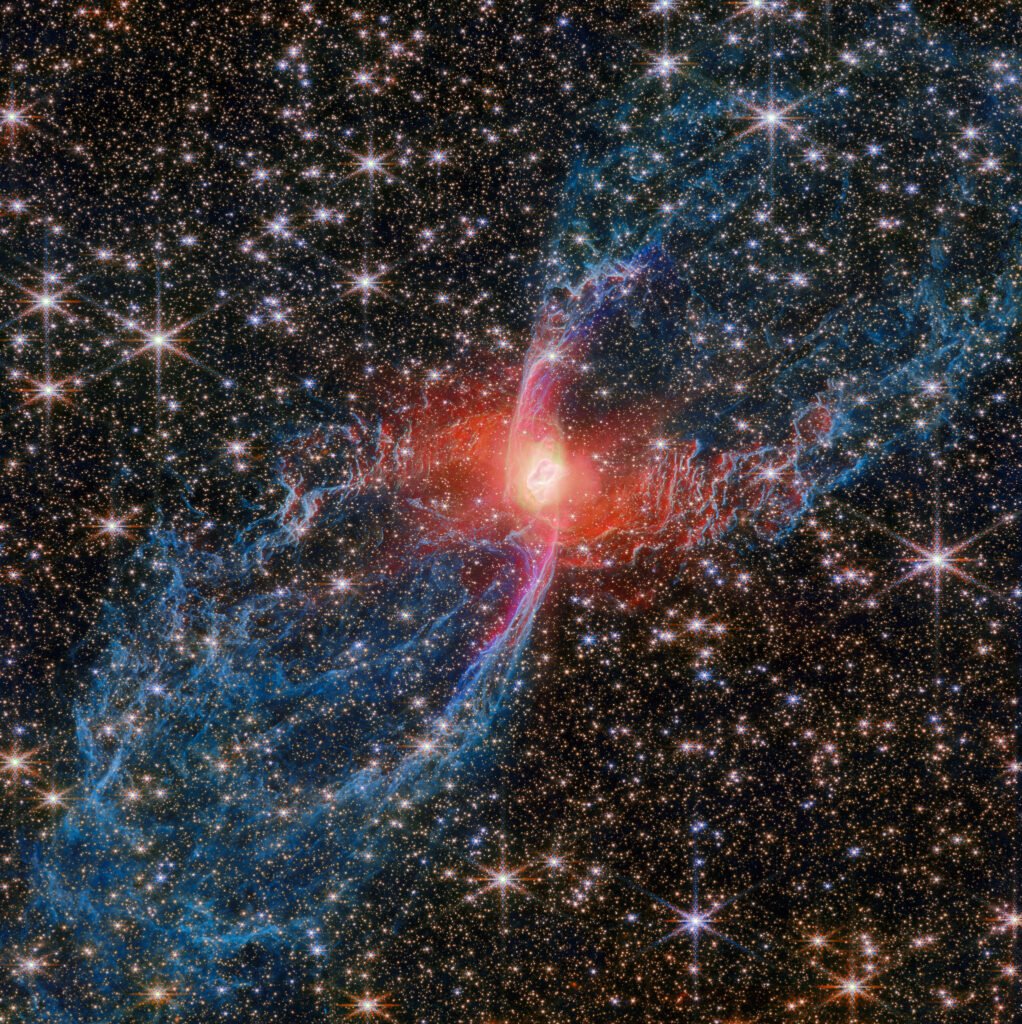
The Spider Nebula looks calm at first glance, but the newest Webb image shows something far more unruly. Through infrared eyes the structure becomes a mosaic of shocks, filaments and blazing knots shaped by a star in its final acts. Dust once hidden now glows with eerie clarity and the whole scene feels like a slow cosmic upheaval captured in a single frame. Anyone who loves space can feel the pull of a place that refuses to stay quiet or predictable.
1. The central star is wrapped in turbulent dusty arcs.
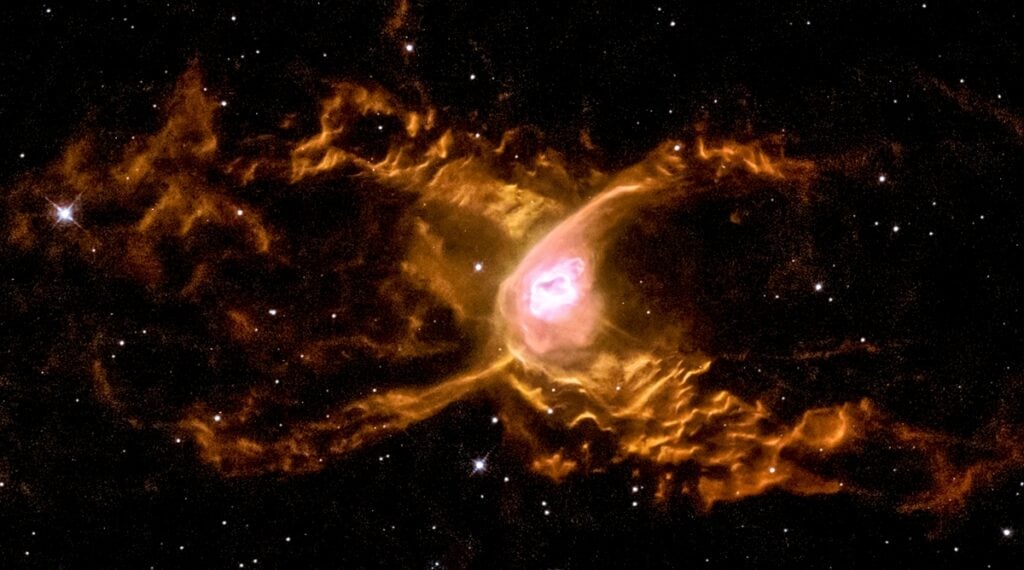
The arcs become unmistakable when seen through Webb’s sensitivity. Fine dust curls around the star in uneven waves that appear newly sculpted. As reported by NASA the image reveals an intricate dusty shell shaped by intense stellar winds. The shape suggests the star expelled its layers over multiple bursts rather than one gentle release, leaving behind a pattern filled with sharp bends and dim pockets.
Those pockets make the nebula feel alive rather than static. Each ripple seems to carry evidence of earlier eruptions that pushed outward at different speeds. The longer you examine it the more layered the chaos becomes.
2. Expanding lobes stretch outward in fractured directions.

What looks like symmetry from afar quickly dissolves into uneven lobes. One lobe appears compressed while another reaches farther before fading into space. As stated by ESA the uneven structure comes from rapid polar outflows shaping the larger form. Those fast streams blow through older material and distort the edges, leaving jagged walls and thin curtains of gas.
The contrast between dense regions and transparent gaps gives the nebula a restless feel. You sense the history of collisions within every glowing ridge. The lobes keep expanding but their scars show the violence that carved them.
3. A possible companion star may influence the shaping.
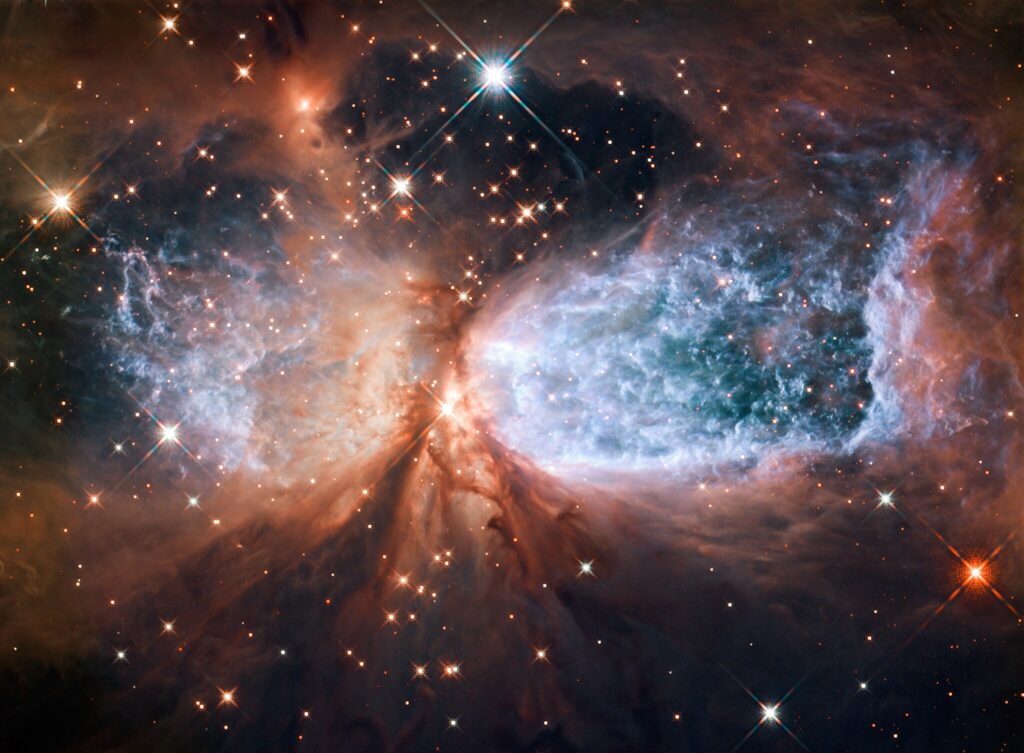
Some features in the Webb image refuse to line up cleanly, and that imbalance hints at a second star. As discovered by Scientific American a companion star can tilt the dust disc and redirect outflows in dying stellar systems. If that is happening here the chaotic structure is a record of two stars locked in a difficult final dance.
This possibility adds a kind of tension to the image. You can sense how gravitational nudges might twist the gas into unexpected shapes. The idea of two stars shaping one nebula makes the whole scene feel more turbulent.
4. Near infrared light exposes details hidden for decades.

Once dust blocked most of the nebula’s inner features but Webb sweeps that barrier away. The brightness inside the shell reveals strands that twist in every direction. They form a tangled network that speaks to the star’s changing winds and uneven eruptions.
That clarity shows how much earlier telescopes missed. Entire regions once in shadow now gleam faintly, showing delicate structures that reshape our understanding of how this nebula grew.
5. Shock fronts appear where fast winds slam into older gas.
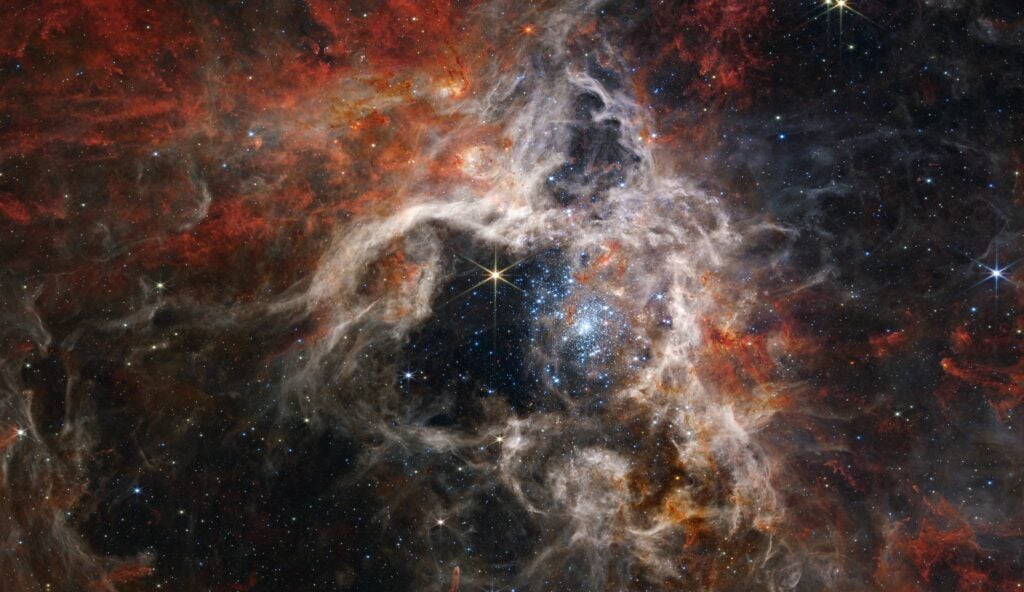
You can spot bright rims along the expanding arcs, almost like bruises glowing at high temperature. Those rims appear where fast moving material rams into slower layers. Temperature spikes light up the gas and create new patterns along the borders.
These shocks help explain why the nebula looks so segmented. Each collision creates another boundary and the nebula becomes a patchwork of past impacts all frozen in the moment Webb captured it.
6. The dust disc seems warped by uneven stellar pulses.
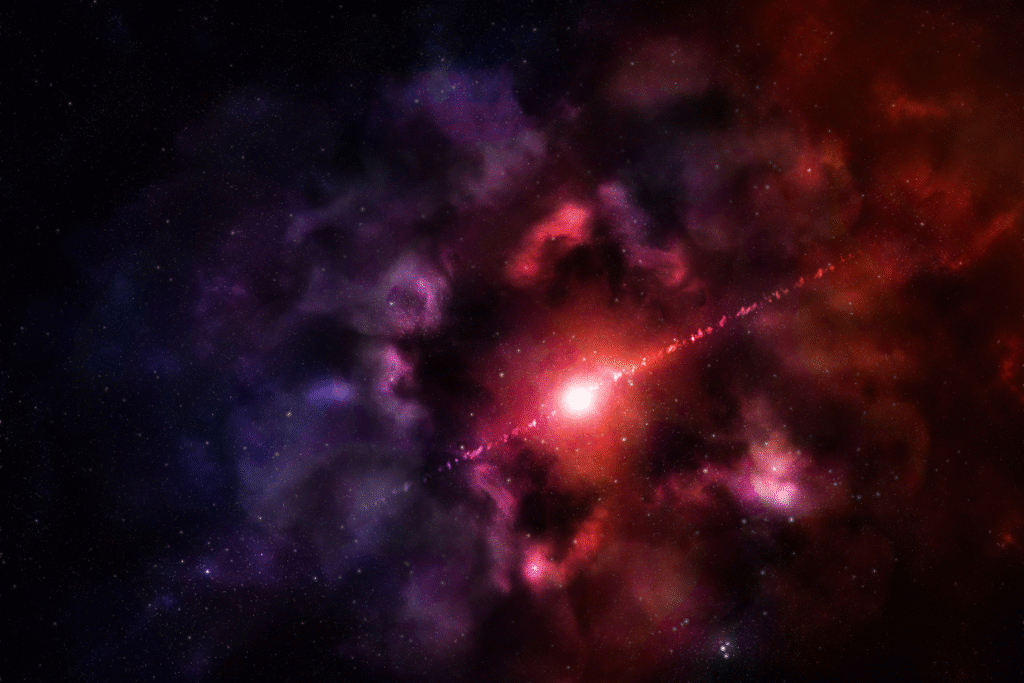
The central dust does not lie flat or smooth. Instead it bends subtly, hinting at bursts of material released at uneven intervals. Each pulse reshapes the disc slightly and those distortions ripple outward.
The warping gives the nebula its unpredictable form. Instead of a clean circular shell you get a twisting layered structure that keeps shifting with each new ejection.
7. Ionised gas outlines the paths of ancient eruptions.
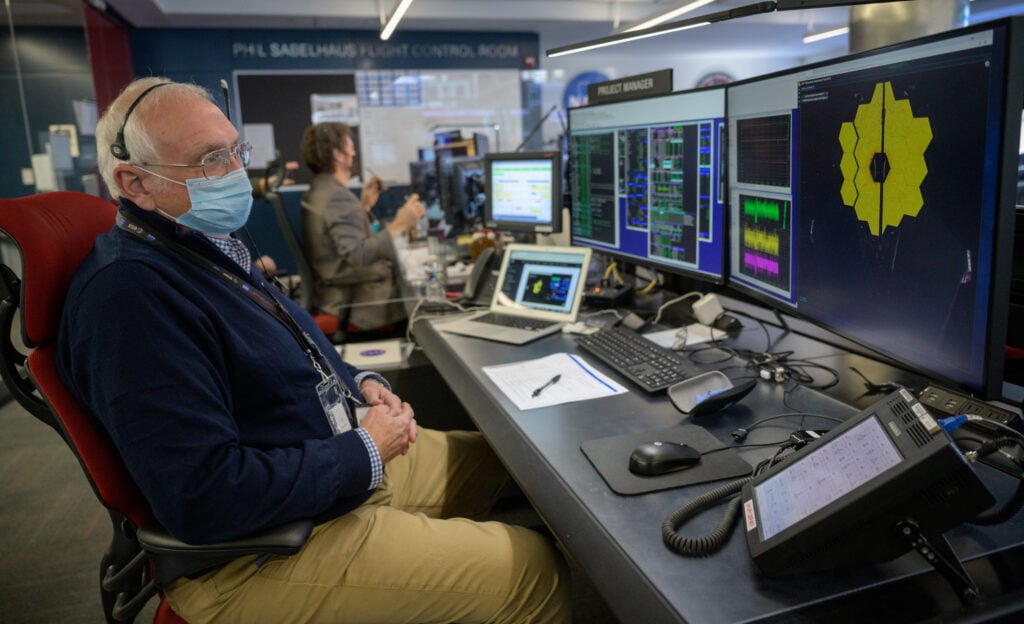
The glowing strands trace earlier eruptions that blasted outward and faded over centuries. Their faint curves reveal how the star rotated and changed as it grew unstable.
Those trails turn the nebula into a kind of living archive. Every illuminated line marks a moment when the star forced its way outward again.
8. Dense knots of material hint at stalled outflows.

Some regions look clumpy rather than smooth, which suggests areas where outflows slowed and cooled. Those knots resist the star’s winds and act as obstacles that redirect surrounding gas.
Their presence adds texture and complexity. Instead of a uniform flow you get a battlefield of competing structures pushing and folding against each other.
9. Temperature variations create striking color differences in the image.
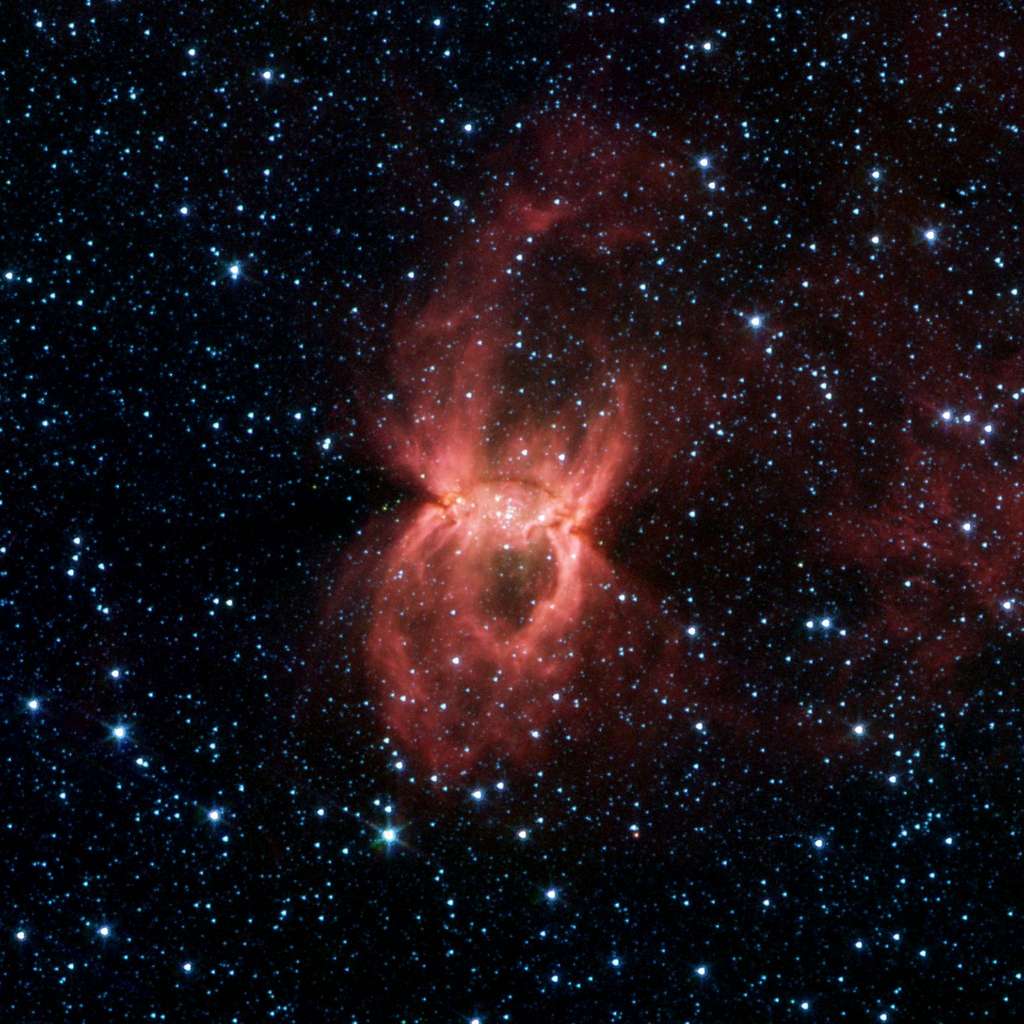
Cool dust appears deep red while hot shocked gas glows brighter. The contrast reveals the nebula’s internal layering and hints at multiple stages of its evolution.
These color shifts show the changing heat and density throughout the region. It becomes clear how many times the star reshaped its surroundings with bursts of energy.
10. The nebula’s patterns reveal a star nearing its quiet end.

All this chaos comes from a star slowly shedding the last pieces of itself. Even though the violence is intense the process is steady, a final release before the star cools into a white dwarf.
Seeing this moment in such detail gives the nebula a strange intimacy. You are looking at a star’s final story recorded in gas and dust spread across light years.
